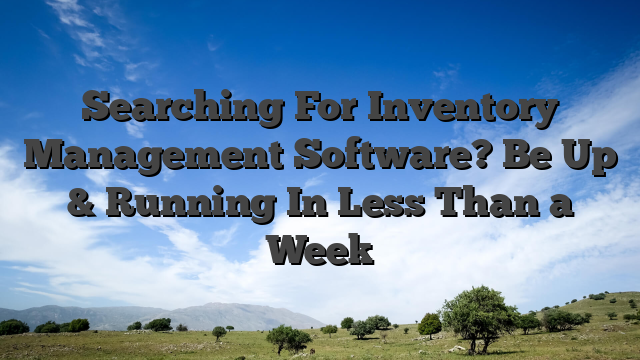In the bustling realm of healthcare, the effective management of assets stands as a pivotal element in ensuring smooth operations, cost efficiency, and superior patient care. Asset management refers to the systematic handling of all equipment, facilities, and resources within healthcare facilities. It plays a critical role in overseeing the myriad assets. Ranging from life-saving medical devices to infrastructure components, ensuring they are maintained, tracked, and utilized optimally.
The healthcare sector’s embrace of asset management isn’t merely a matter of convenience; it’s a necessity. The efficient allocation and upkeep of assets play a fundamental role in supporting healthcare providers’ operations. Not only does it aid in keeping costs under control, but it also guarantees operational efficiency, compliance with regulatory standards, and most crucially, the delivery of optimal patient care.
The Value of Effective Asset Management
In the complex world of healthcare, effective asset management stands as the linchpin for various advantages and functional efficiencies. It isn’t merely about keeping a tab on inventories or ensuring the availability of equipment; it’s about achieving a delicate balance that leads to several substantial benefits.
Cost Control and Operational Efficiency are at the heart of effective asset management in healthcare. By employing precise tracking and maintenance practices, healthcare facilities can avoid unnecessary expenditures on unused or underutilized equipment. They streamline workflows and operational processes, enhancing efficiency and ensuring timely and quality patient care.
Moreover, in the healthcare domain, Compliance and Regulatory Requirements are non-negotiable. Adherence to strict regulations and standards is critical for ensuring quality care and the safety of patients. Effective asset management is instrumental in meeting these requirements, ensuring that all equipment is up-to-date, well-maintained, and compliant with standards and regulations.
The crux of effective asset management lies in Optimizing Patient Care and Safety. By ensuring the availability of necessary equipment, maintaining its quality, and preventing breakdowns or downtime, asset management directly impacts the quality of patient care and their safety within healthcare facilities.
Understanding Asset Management in Healthcare
In the labyrinth of healthcare facilities, various assets are indispensable for smooth operations. These assets range from medical equipment to infrastructure components, each playing a crucial role in patient care and service delivery.
However, managing these assets is no walk in the park. Healthcare facilities grapple with numerous Challenges in Asset Management. Issues like equipment downtime, maintenance complexities, equipment tracking, and resource utilization pose ongoing challenges that necessitate effective management practices.
The Role of Technology in Asset Management is becoming increasingly prominent. It serves as a game-changer in the effective management of healthcare assets. Utilizing advanced technology such as tracking systems, RFID, and barcoding allows for streamlined processes, efficient tracking, and accurate maintenance scheduling. These technological advancements significantly aid in reducing downtime and streamlining asset management.
Importance of Efficient Asset Management
The significance of efficient asset management in healthcare reverberates far and wide. It ensures Improved Resource Allocation and Utilization. By efficiently managing resources, healthcare facilities can better allocate assets where they’re most needed, avoiding underutilization or overuse of equipment.
Moreover, Efficient Asset Management plays a crucial role in Enhanced Maintenance and Lifecycle Management. Regular maintenance schedules and lifecycle management plans ensure that assets are in top-notch condition, thus extending their lifespan and improving operational efficiency.
Another critical aspect is the Impact on Return on Investment (ROI). Efficient asset management directly influences the financial health of healthcare facilities. By optimizing asset utilization and enhancing efficiency, it ensures a more significant return on investment and minimizes unnecessary expenditure, thereby positively impacting the bottom line.
Efficient asset management forms the backbone of an effective hospital asset management, offering multifaceted advantages. It’s not just about maintaining equipment; it’s about ensuring streamlined operations, maintaining compliance, and most importantly, delivering optimal care to patients.
Technology and Innovations in Healthcare Asset Management
The rapidly evolving landscape of healthcare asset management continues to witness the integration of cutting-edge technologies that revolutionize how assets are managed and utilized in healthcare facilities.
- Role of IoT and Tracking Systems IoT (Internet of Things) and advanced tracking systems have emerged as a boon in healthcare asset management. By providing real-time monitoring and data analytics. These technologies ensure precise tracking of equipment, helping to prevent loss, optimize utilization, and streamline maintenance schedules.
- Implementing RFID and Barcoding The implementation of RFID (Radio-Frequency Identification) and barcoding systems offers accuracy and efficiency in asset tracking. These technologies aid in inventory management, equipment traceability, and minimizing human error. Thereby streamlining processes and ensuring rapid identification of assets.
- Predictive Maintenance and Asset Utilization Analytics Leveraging predictive maintenance techniques and asset utilization analytics enables healthcare facilities to predict equipment failures before they occur. By employing data-driven insights, facilities can better plan. And schedule maintenance activities, optimizing asset performance and lifespan.
Ensuring Compliance and Patient Safety
- Regulatory Compliance and Asset Traceability Compliance with stringent regulatory standards and maintaining a detailed asset traceability log is pivotal in healthcare settings. Asset management systems assist in ensuring that all equipment adheres to set standards, thereby mitigating potential risks and ensuring patient safety.
- Impact on Patient Care and Safety Measures Effective asset management directly influences patient care and safety measures. Quick access to properly functioning equipment ensures prompt and efficient patient care, thus directly impacting the quality of healthcare services provided.
- Importance in Pandemic Preparedness In times of crisis such as pandemics, efficient asset management plays a critical role. The ability to swiftly locate, manage, and allocate critical medical equipment is imperative for ensuring effective response and patient care during emergencies.
Case Studies and Success Stories
A. Examples of Efficient Asset Management Implementation. Case studies highlighting successful implementation of efficient asset management in various healthcare settings, elucidating the impact on operational efficiency and patient care.
B. Improved Outcomes and Cost Savings. Showcase the success stories, detailing how efficient asset management practices led to improved patient outcomes, cost savings, and enhanced overall operational efficiency.
C. Lessons Learned and Best Practices. Insights from successful implementations, outlining best practices and key takeaways that can be adopted by other healthcare facilities.
Strategies for Successful Healthcare Asset Management
- Key Steps in Implementing an Effective Asset Management System. Detailed steps that healthcare facilities can take to implement a robust asset management system, from planning to execution.
- Team Collaboration and Training. Emphasizing the importance of team collaboration and providing adequate training for staff members to ensure the seamless adoption and implementation of asset management practices.
- Continuous Improvement and Adaptation. The importance of continuously assessing and adapting asset management strategies to align with evolving healthcare demands and technological advancements.




